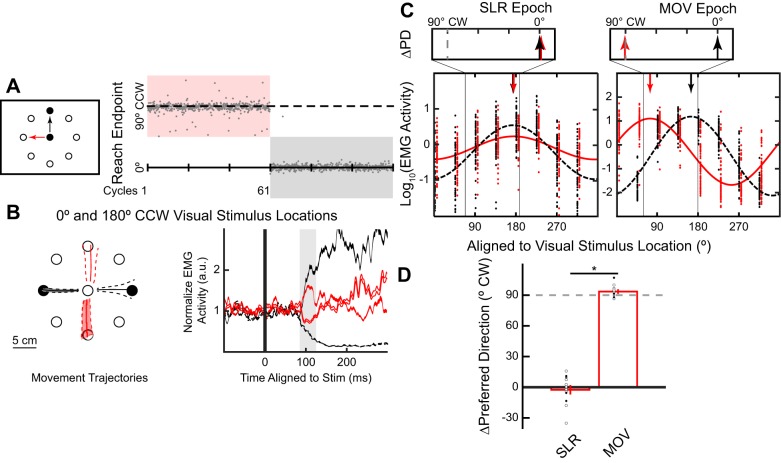Fig. 4.
Stimulus-locked response (SLR) tuning did not adapt during a mental visuomotor rotation task. Same layout as Fig. 2. A: task schematic, timeline, and behavioral performance for a representative participant during the mental visuomotor rotation task. Veridical visual feedback was given throughout the whole experiment. Participants were instructed to reach directly (VIS block, black) or 90° counterclockwise (CCW; ROT block, red) to the stimulus location, with the order counterbalanced across participants. B and C: electromyography (EMG) data from the representative participant. B: mean (±SD) movement trajectories and mean (±SE) EMG activity for both the leftward and rightward stimulus locations. C: preferred directions (PD) for both the VIS and ROT blocks during both the SLR and reach-related movement (MOV) epochs (vertical arrows). D: group mean (±SE) ∆PD between VIS and ROT blocks across all participants. Open and closed circles indicate participants who first performed the VIS and ROT block, respectively. *P < 0.05.

